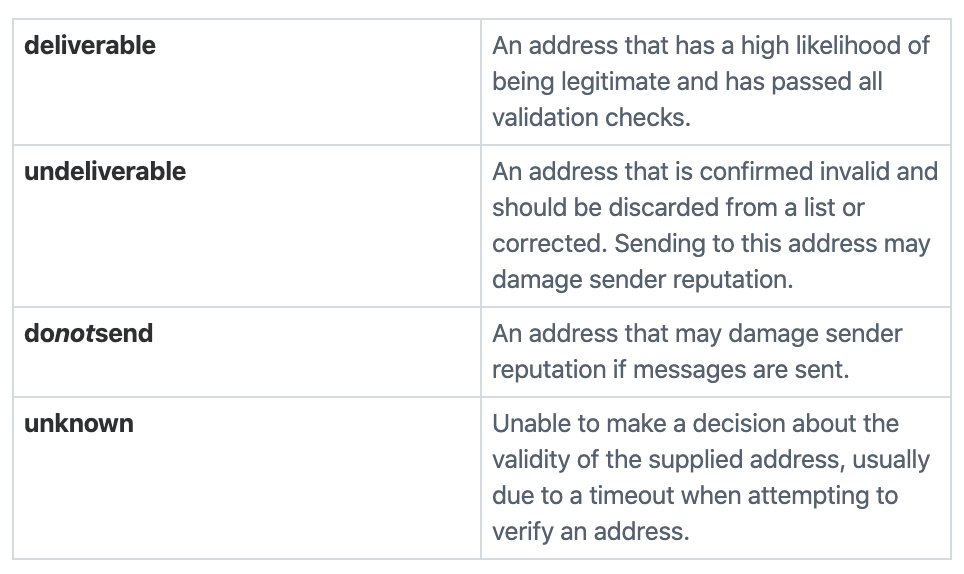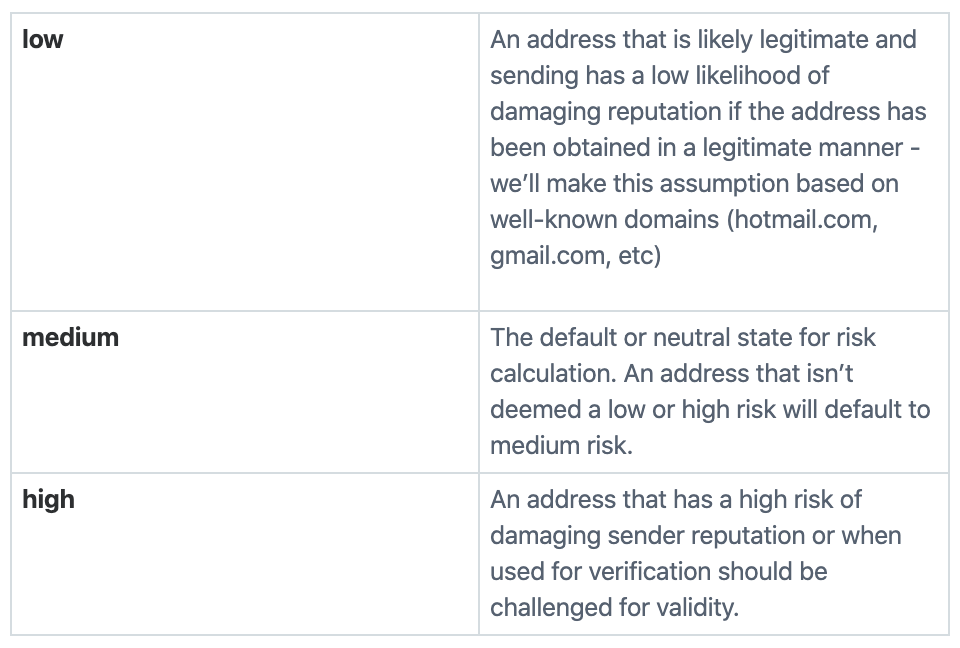Deliverability
Using segmentation and validations for email list cleaning
What do you do with the unknowns and medium risk addresses from a Validations report? Segmentation can tell you which ones to keep or toss.
PUBLISHED ON
Validations and list segmentation go together like peas and carrots. Indeed, you may already be using our validation service to validate new recipients on your web forms, or even validating bigger lists with our self-service bulk validations tool to weed out any potentially toxic recipients. If you find yourself in the latter group, this article is for you.
First, I have to paint a picture for you – let’s say you have been working with the same old list for years. That list grows over time, but your deliverability woes are bound to be growing as well. Maybe you haven’t been using best practices for list segmentation or sunsetting, and you know you need to make a change before your deliverability gets worse.
This is a great time to use our bulk validations to get you back on the right path. Using our bulk validations tool - either via the Mailgun control panel or the API - you can take those email lists and have us validate each recipient address for you. This is a great first step, but what you do from there is what really matters going forward, and it’s going to take a bit of creativity.
Segmentation is a common best practice in the email industry. In theory, when you break a larger list down into smaller lists based on different qualifiers and adjust the email contents to appeal to those smaller audiences, your open and click rates are bound to rise. But what happens with you pair segmentation with validations? Super clean lists you and your ESP will thank you for in the long haul.
Results, risk, and segmentation
Before I continue onto the next steps, it’s important that we talk about the possible output from a validations payload. Let’s look at a single validations output:
For the purposes of segmentation, we will focus on two main values; result and risk. Each value is defined below:
Result

Risk

After running your validations job, or even as new recipients come in from online signups forms, you need to consider how to segment your recipients.
How to segment your results and risks
For the record, it is always a good idea to segment your recipients regardless, and for certain recipients that have passed validations, you can segment however you like (such as segmentation based on engagement, ISP, etc). When you’re looking at the results given back to you from our bulk validation tool, there are a few things to consider.
Good recipients, that is any address that returned back with a deliverable result and low risk, are good to go into any segment you choose. Recipients that failed with an undeliverable or do-no-sent result or have a high risk should be taken out of your list entirely – they aren’t worth it. Once you’ve separated the good from the bad, you’re left with some stragglers with unknown results or have a medium risk.
What do you do with the remaining addresses?
The answer may surprise you: Segment them!
An unknown result or a medium risk address is by no means a death sentence for a recipient address. Maybe we could not connect to their MX host in a timely manner, or maybe there is an unknown provider in the mix. Whatever the reason, there is still an inherent risk that the first send to these recipients will fail, but they also might not.
So, we need to handle them by segmenting these recipients into their own list and tagging these recipients to reflect that they are a riskier segment. In practice, you would create a list segment to identify that these recipients must be vetted before they can be confidently added to your main email stream.
You can start by creating a segment of your own list or use our mailing lists to create a “Vetting” list. Then, create a tag to identify the first outreach to a list that is being vetted (this can be something simple like mg_vetting). Once you send your first campaign to these “vetting” recipients, it is time to evaluate their performance.
Vetting your riskier segment
To make this a little easier, use the Mailgun Events API and filter for the tag you created to identify this segment. For any messages that delivered without an issue, go ahead and move them over to your list of known good addresses and segment from there - hopefully they’re also engaged recipients so that you can move them to your engaged recipients segment as well.
If recipients on the “vetting” segment failed to deliver at all, consider removing the recipient from your list completely. It is more likely that these recipients will just become toxic to your list in the long run, so getting rid of them is a far better alternative than keeping a recipient that will never engage.
A trial process for your email list
In essence, you are just vetting your recipient addresses to give yourself a better chance at better deliverability. At the end of the day, it is the responsibility of a sender to send out messages that are expected and wanted by the recipient. Anything beyond that risks damage to your reputation as a sender and segmenting reduces your chance at causing harm when done correctly.
Validations provide senders with that extra kick to help get those lists where they need to be, and segmentation solves for the unknown variables – literally.





